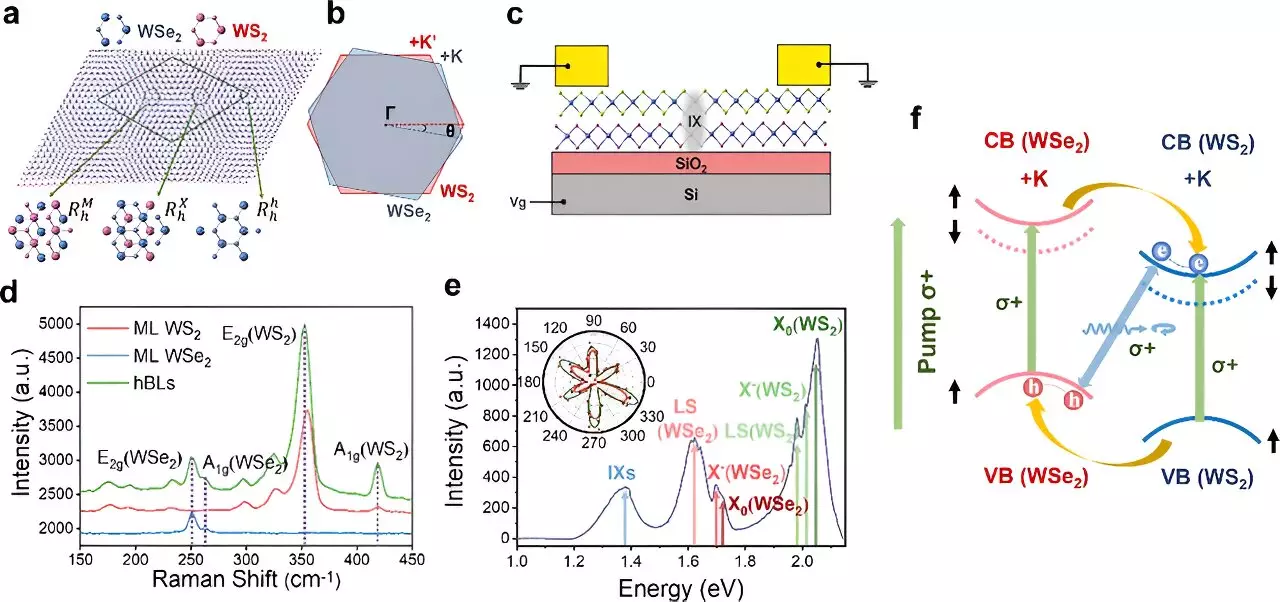Transition metal dichalcogenide heterobilayers have become a topic of interest due to their potential applications in optoelectronics. In a recent study published in Science Advances, researchers explored the effects of twist engineering on valley polarization in these heterostructures. Twist engineering involves manipulating the twist angle between different monolayers to control excitonic potential and valley properties, providing a new avenue for the development of valleytronic devices.
The researchers found that by adjusting the twist angle in fabricated WSe2/WS2 heterostructure devices, the valley polarization of interlayer excitons could be effectively controlled. This control extended to both the degree of circular polarization (DCP) and the polarization switching, offering a unique way to manipulate the valley properties in these materials. The twist angle-dependent control of the excitonic potential and valley polarization highlights the potential of twist engineering in enhancing the controllability of valley polarization.
Experimental studies revealed that a larger moiré period resulting from a larger twist angle led to a lower interlayer excitonic potential at local minima. This, in turn, confined more excitons, leading to enhanced DCP. Moreover, an increase in intralayer electron-hole exchange interactions at a large angle reduced the intralayer valley lifetime, ultimately decreasing the interlayer valley polarization. These findings showcase the intricate mechanisms behind twist angle-dependent DCP in transition metal dichalcogenide heterobilayers.
Theoretical calculations based on first-principle theory further supported the experimental observations. The calculations showed that the difference in excitonic potential between two minima increased with the twist angle, requiring a higher external bias for devices with a larger twist angle to switch the polarization. This theoretical understanding of the relationship between twist angle and excitonic potential provides valuable insights into the design and optimization of valleytronic devices in the future.
Building on the concept of polarization switching, the researchers also demonstrated a valley-addressable encoding device. This device offers a platform for the development of future non-volatile memories, leveraging the twist engineering techniques to enable efficient control and manipulation of valley properties. The potential applications of this technology in the field of optoelectronics and information storage are promising, paving the way for innovative and high-performance devices.
The study sheds light on the significant impact of twist engineering on valley polarization in transition metal dichalcogenide heterobilayers. By uncovering the intricate relationship between twist angle, excitonic potential, and valley properties, the research opens up new possibilities for the development of valleytronic devices with enhanced controllability and functionality. The findings present a compelling case for the integration of twist engineering techniques in the design and optimization of future optoelectronic systems.


Leave a Reply